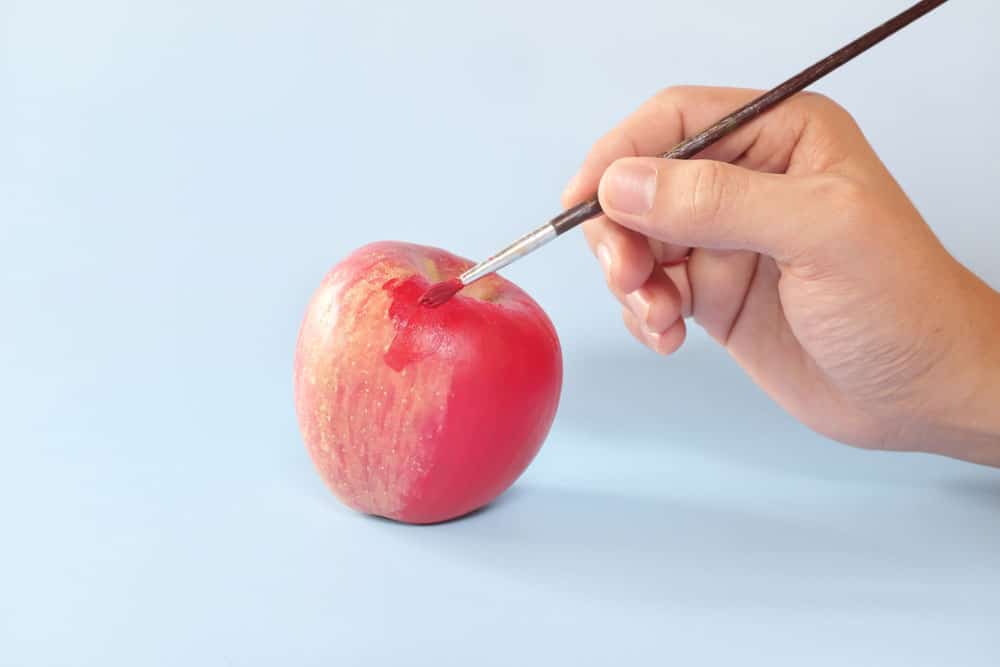Could some of the food in your cabinets or fridge be fake? You may have already felt that sting of betrayal – like discovering your “100% Parmesan” is cut with wood pulp or that pricey saffron you splurged on contains unhealthy chemical dyes. If so, you’re in good company. Food fraud is more common than you think, with mislabeled products duping consumers and threatening both wallets and health.
Let’s take a closer look, so you can shop smartly and avoid getting swindled. Protect both your cash and your health against the food fraud frenzy!
How Common Is Food Fraud?
Around 10% of all commercially sold food products are adulterated or mislabeled in a way that misleads shoppers. Sneaky fraudsters have all kinds of tricks up their sleeves too – from disguising cheap ingredients as premium ones to fudging geographical origins to making bogus health claims.
The stats reveal how widespread the issue is. Up to 30% of olive oil for sale is potentially fake – cut with cheaper vegetable oils while boasting Italian origins. Fatty seafood may be rich in anti-inflammatory omega-3s but there may be problems with its authenticity. Nearly 75% of seafood is mislabeled on menus and store shelves. And over 50% of honey gets diluted and laundered through complex global networks before landing in squeeze bottles. Even trendy “superfoods” like acai and goji berries frequently have their antioxidant contents artificially inflated.
So, what gives? Big money drives food fraud, as scammers bank on shoppers not examining products closely. Forewarned is forearmed against sketchy asparagus water claiming miracle properties or saffron cut with dangerous chemical dyes.
Why Food Fraud Matters
Food fraud isn’t a harmless lie – it has implications for your wallet, health, and even the environment. Financially, bogus ingredients and misleading origin claims mean shoppers drastically overpay for counterfeit goods that should cost less. Like that $15 bottle of “premium extra virgin Italian” olive oil that’s mostly lower quality vegetable oil costing $2 to produce.
Ingredients and allergens not specified on the label also pose health risks for unsuspecting consumers. Say hello to inflammatory reactions, contamination from unregulated sources, and even toxicity from chemical additives used to give it a golden color that resembles legit olive oil.
And when sustainably sourced or fair-trade claims get fudged, it damages initiatives that encourage responsible production and obscures transparency.
At the end of the day, rampant food fraud destroys consumer trust in brands and retailers. But you have the power to push back against deception through savvy shopping and demanding accountability from suppliers. Time to flex those consumer muscles!
How to Spot Food Fraud
With careful eyes and awareness, you can spot counterfeit foods. Start by scrutinizing the appearance of the items you buy. Uniform sizes, shapes, and colors can signal adulteration in products that naturally vary like produce and seafood. That perfect-looking wild salmon fillet? Likely farmed. Those identically oblong honeydew melons outside of season? Imposters. Fakes tend to lack natural imperfections.
Examine labels closely too, watching for vague claims like “made in America” or flowery language masking specifics. Misspellings and questionable certifications should also raise red flags. Does that “organic” label seem sketchy? Research marks from reputable third parties like USDA Organic, Non-GMO Project Verified, and Fair Trade.
When possible, buy directly from transparent sources like local farmers who can explain their origins. For processed goods, choose reputable national brands with detailed ingredient lists and mechanisms for consumer inquiries.
It takes sleuthing, but with eyes wide open to common tricks, you can intercept many counterfeit foods. Trust your senses to guide you and vote suspect products off your grocery island!
Most Mislabeled Foods
When it comes to food fraud, scammers tend to target certain products over others to swap inferior ingredients while charging premium prices. Be extra vigilant when shopping for these commonly mislabeled foods:
- Liquid gold – olive oil. The murky supply chain makes fudging origins and diluting extra virgin with cheaper vegetable oils extremely common. Up to 80% of what’s sold as “extra virgin” fails official quality standards on inspection.
- Honey also gets heavily adulterated, with cheap sweeteners like corn syrup illegally added then passed off as 100% pure honey. Testing shows 75% of store-bought honey is suspect.
- Maple syrup is another target, often thinned with simple syrups or harmless but undisclosed sugars like beet syrup or brown rice syrup while touting “Grade A Dark Color, Robust Taste” pedigrees.
- Saffron, one of the world’s priciest spices by weight, faces rampant fakes using yellow dyes on inferior threads. Tests reveal some contain nasty chemical colorants. Other spices like vanilla, cinnamon and oregano get bulked up with fillers too. Some, especially imported ones, may contain heavy metals, like lead.
- Seafood sees outright species substitution, like tilapia sold as red snapper or Asian catfish masked as grouper. One study showed over 95% of white tuna samples were escolar, an oily species that can cause digestive issues.
Even trusted marks like “organic” and “fair trade” can be fake, with conventionally grown produce and animal products illegally sold under these ethical labels. It pays to scrutinize claims. So, shop smart, look for reputable certifications, and listen to your intuition around certain high-fraud foods. Consuming fake foods can be risky to your health if you have food allergies or if you consume foods contaminated with heavy metals, like spices.
Conclusion
Armed with insider intel, you can outsmart fraudsters trying to dupe you at the grocery store. Shop savvy by scrutinizing labels, watching for red flags, and leveraging reputable certifications to sniff out fakes. Vote sketchy products off your list through the power of your purse. And don’t hesitate to contact suppliers or authorities if something seems amiss. Stay vigilant, but also keep enjoying those tasty grocery runs! By spending consciously, you can reap the rewards of eating healthy without fraud.
References:
- “Food fraud – Food and Agriculture Organization of the United Nations.”.fao.org/3/cb2863en/cb2863en.pdf.
- “FDA Food Fraud Testing Finds Adulteration Among 10 Percent of Honey ….” 14 Dec. 2022, food-safety.com/articles/8217-fda-food-fraud-testing-finds-adulteration-among-10-percent-of-honey-imports.
- “Emerging trends in olive oil fraud and possible countermeasures.” 01 Jun. 2021, sciencedirect.com/science/article/pii/S0956713521000402.
- “Oceana Finds Seafood Fraud Persists, More Than 20% of Samples ….” 07 Mar. 2019, usa.oceana.org/press-releases/oceana-finds-seafood-fraud-persists/.
- “What Is Food Fraud? | FSNS.” 08 Jun. 2023, https://fsns.com/what-is-food-fraud/.
- “FDA Releases New Food Fraud Webpage | Food Safety.” 10 Nov. 2021, https://www.food-safety.com/articles/7424-fda-releases-new-food-fraud-webpage.
- “Economically Motivated Adulteration (Food Fraud).” U.S. Food and Drug Administration, 2024. https://www.fda.gov/food/compliance-enforcement-food/economically-motivated-adulteration-food-fraud.
Related Articles By Cathe:
10 Most Common Food Frauds That Can Affect Your Health
Food Fakery: It’s as Close as Your Grocery Store
The Healthy Cooking Oil You Probably Aren’t Using
The Healthy Cooking Oil You Probably Aren’t Using
Good Fats Versus Bad Fats: The Problem With Vegetable Oils


